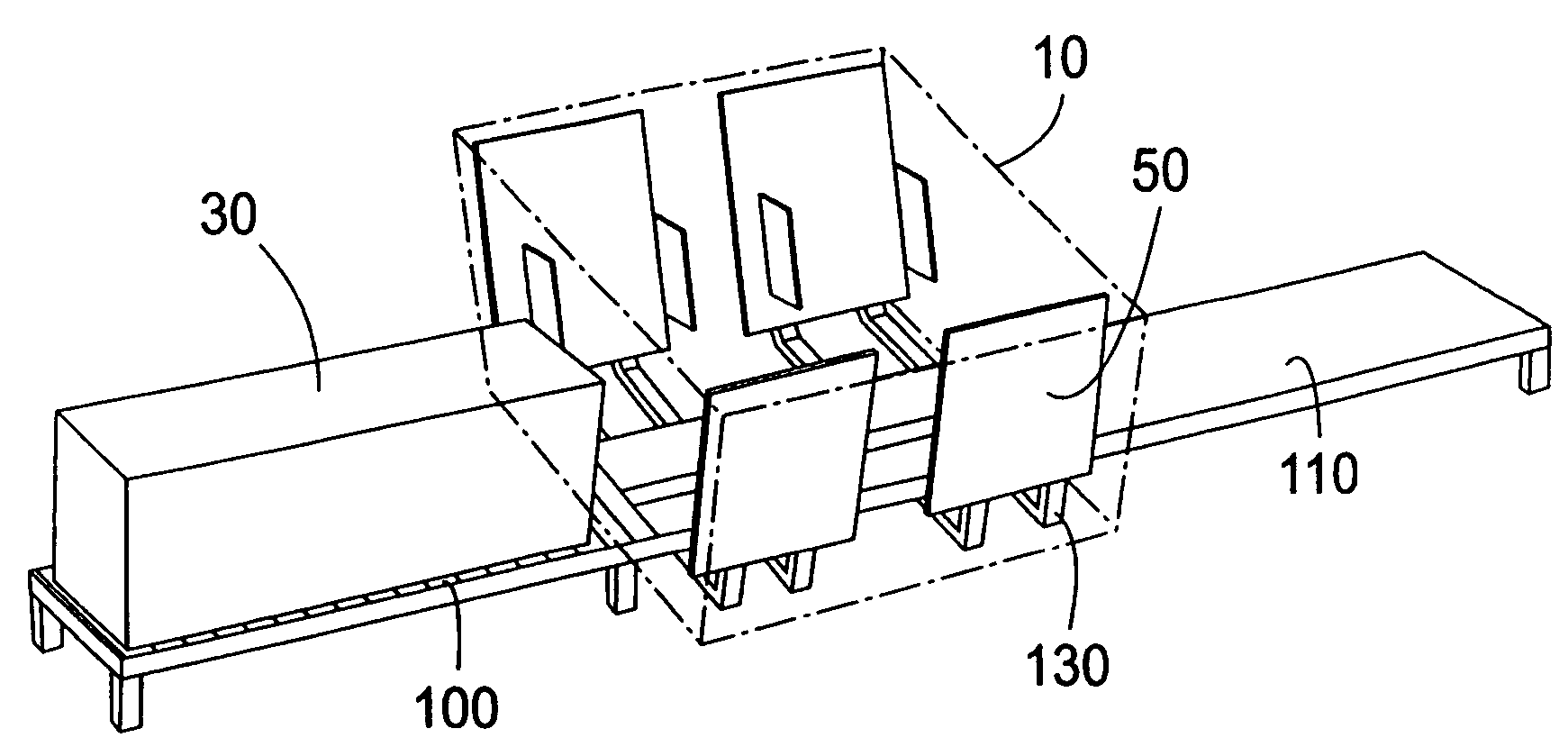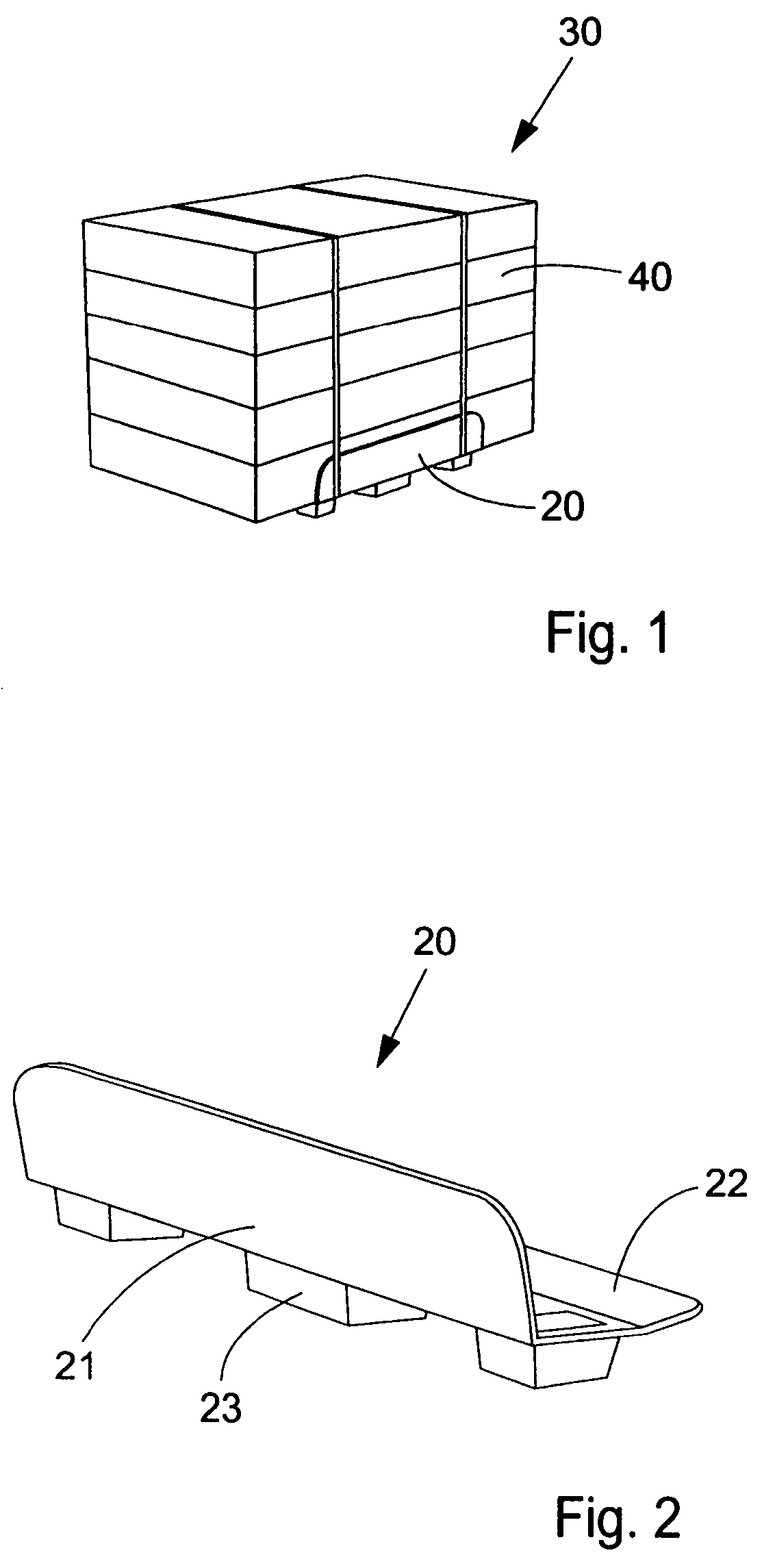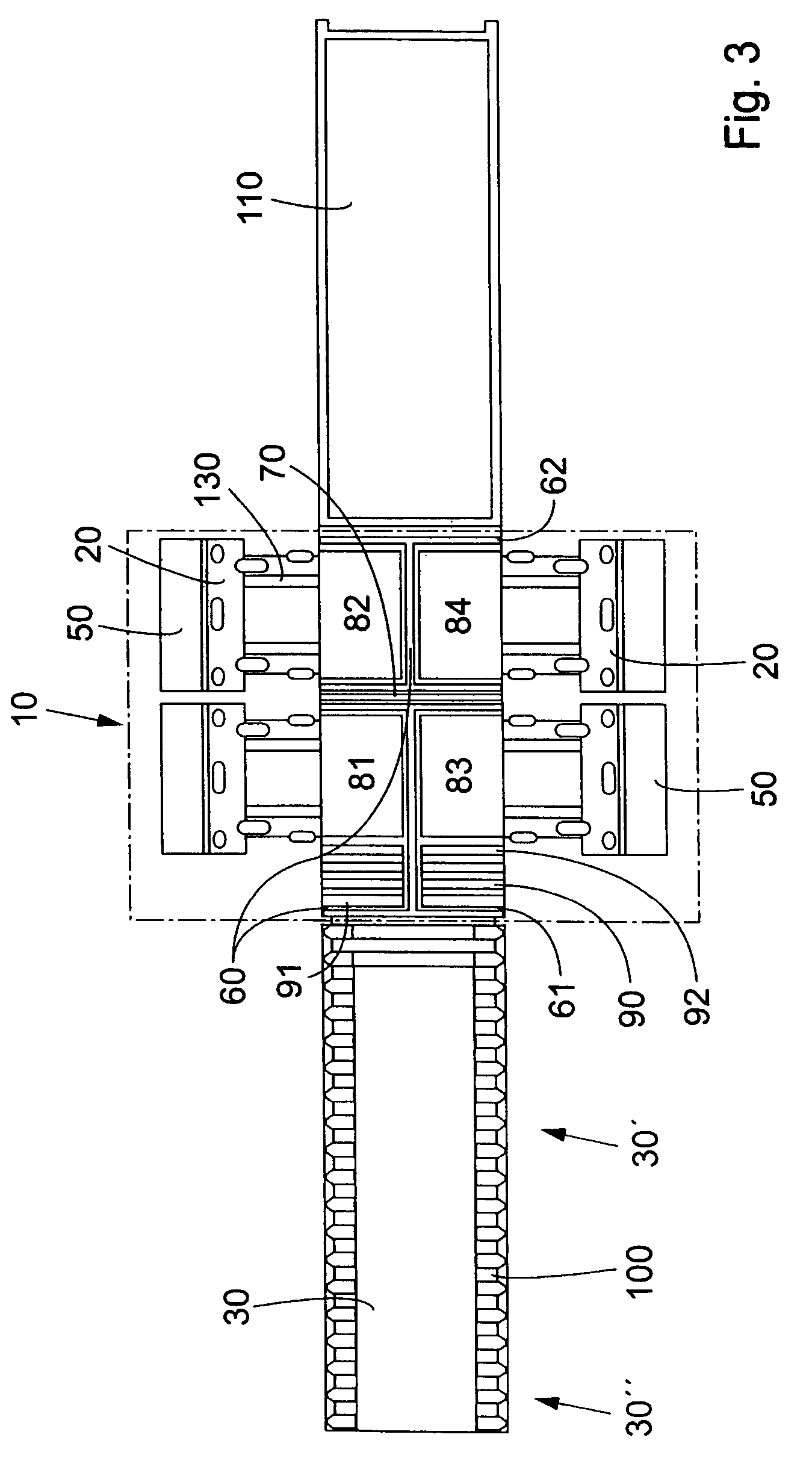Application of loading ledges
a technology of loading ledges and ledges, which is applied in the direction of bundling articles, stacking articles, and bundling machine details, etc., can solve the problems of short working cycle, inability to produce a small number of unit loads consisting of one or more packages, and often has to be refilled on pallet piles, etc., to achieve simplified maintenance of inventive application systems and applications, enhanced loading ledges, and easy updating
- Summary
- Abstract
- Description
- Claims
- Application Information
AI Technical Summary
Benefits of technology
Problems solved by technology
Method used
Image
Examples
Embodiment Construction
[0027]FIG. 1 shows a unit load 30 comprising at least one package 40. One of two loading ledges 20 is positioned at one bottom edge of the unit load and attached to the unit load by straps. The other loading ledge (not shown) is positioned and in contact with the opposite bottom edge of the unit load.
[0028]FIG. 2 shows the loading ledge 20 in more detail. The loading ledge comprises one vertical flange 21, one horizontal flange 22, and at least one support 23 in the form of a foot. The support is hollow so that another loading ledge (not shown) may be stacked on the shown loading ledge.
[0029]FIG. 3 shows a machine 10 for application of loading ledges 20 onto the unit load 30 comprising the at least one package 40. Each package, preferably of corrugated board, cardboard, paper, or any suitable package material may contain any kind of product / s for further transport or storage.
[0030]Each package 40 can be large, e.g. large enough to create the unit load 30 consisting of only one packa...
PUM
| Property | Measurement | Unit |
|---|---|---|
| angle | aaaaa | aaaaa |
| angle | aaaaa | aaaaa |
| angle | aaaaa | aaaaa |
Abstract
Description
Claims
Application Information
 Login to View More
Login to View More - R&D
- Intellectual Property
- Life Sciences
- Materials
- Tech Scout
- Unparalleled Data Quality
- Higher Quality Content
- 60% Fewer Hallucinations
Browse by: Latest US Patents, China's latest patents, Technical Efficacy Thesaurus, Application Domain, Technology Topic, Popular Technical Reports.
© 2025 PatSnap. All rights reserved.Legal|Privacy policy|Modern Slavery Act Transparency Statement|Sitemap|About US| Contact US: help@patsnap.com



